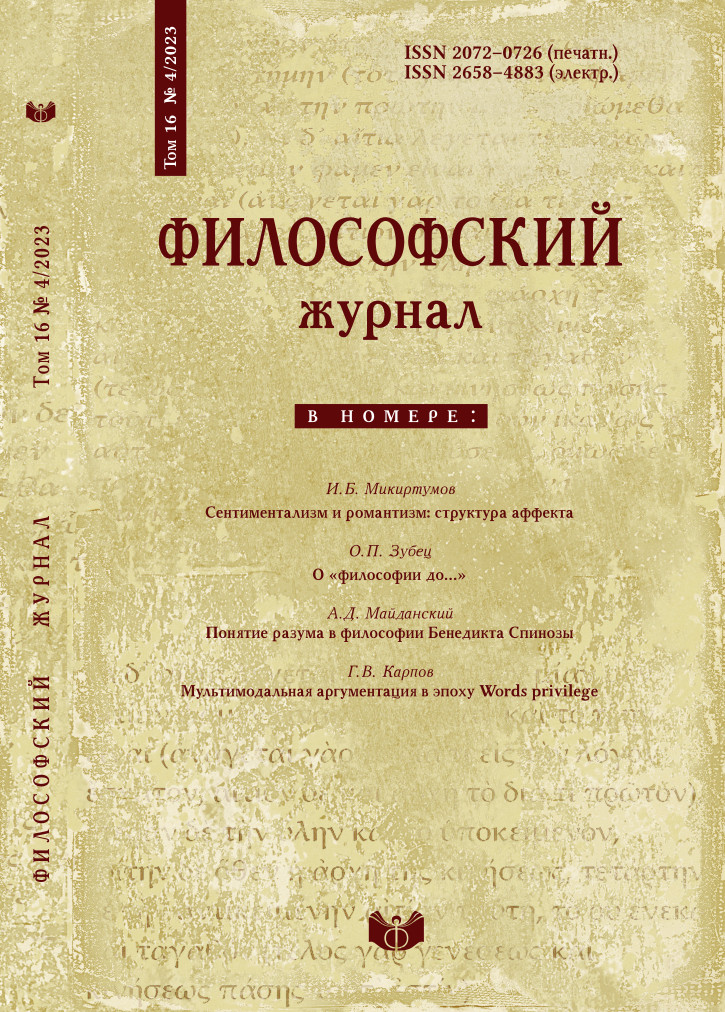Sentimentalism and romantism: the structure of affect
DOI:
https://doi.org/10.21146/2072-0726-2023-16-4-19-34Keywords:
affect, emotion, sentimentalism, romanticism, discourse, communicationAbstract
The purpose of this article is to describe the structure of sentimental and romantic affects. These structures set the forms of the life of the soul in sentimentalism and romanticism as spiritual movements that determine the epochs of culture. They remain relevant to the present and compete in it. I am starting from the distinction between emotion and affect, which has become one of the main themes of the “affective turn” in social sciences and humanities. Here I follow Brian Massumi and suggest that emotions and affects are distinct entities. Emotion is formed in ontogenesis and works with direct perception as a primary reaction. The affect connects later and can correct the emotion. In the sphere of the symbolic, on the contrary, affects are the first to work, and then emotions can already be connected. The description of the four-part structure of affect as such is given. On its basis, sentimental and romantic assemblages of specific affects arise. Sentimentalism is pluralistic, sees the world as a rhizome, works with the economy of feelings. Sentimentalist humanity is held together by an empathic pleasure in a variety of feelings. Romanticism refers to the nomad and to organic unity. His affects are based on a combination of cognitively comprehended metaphors “grasps”, “lifts” and “carries away” with the interoception of the body’s organs. The Romantic offers the experience of ecstatic reincarnation, performative mental action, and action on behalf of the absolute. Sentimentalism is moving towards deepening individual sensitivity and improving the skills of managing feelings; romanticism, on the contrary, is simplified to low mass affects. The conclusion of the article is that in the complex interactions of the two types of affects, the sentimental ones gradually replace the romantic ones, when and if the ability to control one’s feelings is considered as a valuable quality.






